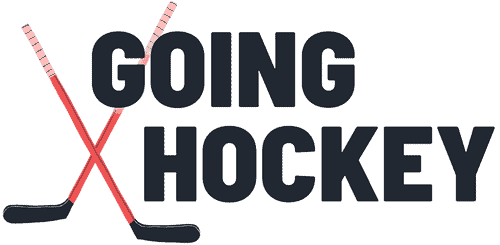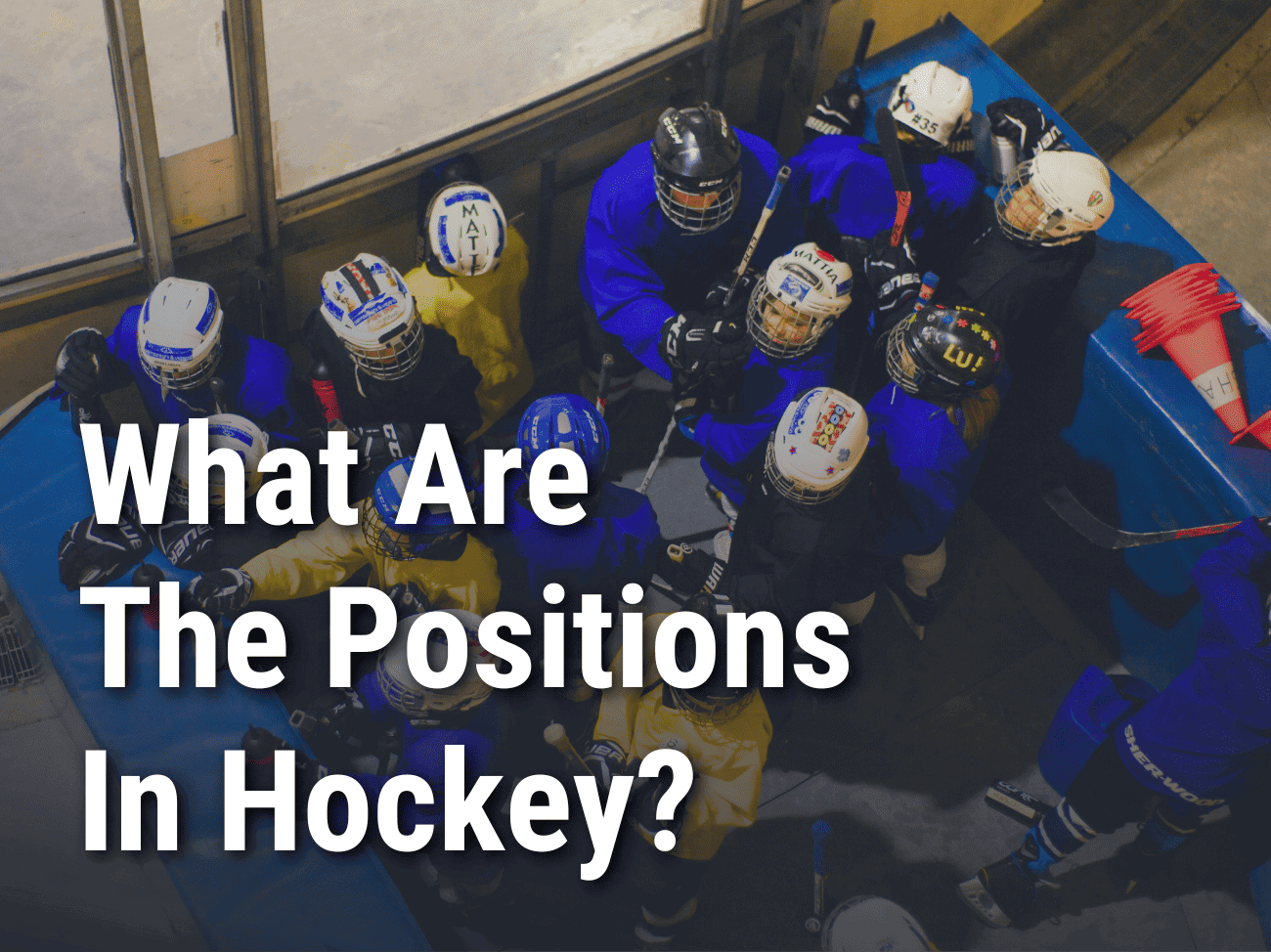Hockey, a captivating sport that marries grace and power on the ice, enthralls fans worldwide with its blend of speed, skill, and strategy.
As the puck dances across the frozen expanse, a symphony of players take center stage, each with a distinct role and purpose that collectively shape the ebb and flow of the game.
What are the positions in hockey?
There are 6 hockey positions:
- Goaltender
- Left defenseman
- Right defenseman
- Center
- Left wing
- Right wing
In general, the goaltender guards the net, defensemen defend against opponents, and centers and wingers contribute to scoring and playmaking.

What Are The Positions In Hockey?
In hockey, there are typically six positions on the ice during a game, each with specific roles and responsibilities. These positions are:
Goaltender (Goalie) – Positions In Hockey
The goaltender is the player who guards the net and tries to prevent the opposing team from scoring goals. Their primary objective is to stop the puck from entering the net using their body, stick, and equipment. Goaltenders are known for their quick reflexes, agility, and positioning skills.
A good hockey goalie possesses qualities such as exceptional reflexes, agility, positioning, mental toughness, and strong communication skills with their defense. They need to be quick to react to shots, able to move swiftly across the net, maintain optimal positioning to cover the goal effectively, stay composed under pressure, and effectively direct their teammates on the ice.
Goalies are also, on the whole, the tallest position in hockey.
Defensemen (Left D and Right D) – Positions In Hockey
There are usually two defensemen on the ice at any given time. They primarily play in their team’s defensive zone and help prevent the opposing team from getting scoring opportunities. Defensemen are responsible for clearing the puck from their zone, blocking shots, and sometimes joining the offensive play by passing the puck to their teammates.
A good hockey defenseman possesses qualities such as strong skating ability, defensive awareness, physical presence, accurate passing, shot-blocking skills, and the ability to read and anticipate the game. They must be able to quickly transition between offensive and defensive play, make smart decisions under pressure, effectively clear the puck from their zone, and provide a solid barrier against opponents’ scoring attempts.
Center – Positions In Hockey
The center is like the “quarterback” of the team. They play in all three zones of the ice and are responsible for taking faceoffs, distributing passes, and supporting both offensive and defensive plays.
Centers are expected to have strong skating, passing, and playmaking abilities.
A good hockey center possesses qualities such as strong skating and puck-handling skills, excellent playmaking ability, defensive responsibility, faceoff proficiency, and leadership on and off the ice.
They need to be adept at distributing passes, creating scoring opportunities, winning faceoffs to gain possession, and supporting both offensive and defensive plays.
Additionally, strong communication and the ability to lead the team’s strategies are important aspects of a successful center’s skill set.
Left Wing – Positions In Hockey
The left wing is responsible for playing on the left side of the ice and is often involved in offensive plays. They work with their linemates to create scoring opportunities, retrieve the puck from the corners, and contribute to both passing and shooting plays.
A good left winger in hockey possesses qualities such as solid skating and agility, accurate shooting skills, effective forechecking ability, creativity, and the capability to work well in coordination with linemates.
They should be capable of creating scoring chances, retrieving the puck in the corners, and contributing to both offensive and defensive aspects of the game.
Right Wing – Positions In Hockey
The right wing plays on the right side of the ice and has the same responsibilities as the left wing. They contribute to offensive plays, help with puck retrieval, and are expected to have strong shooting skills to take advantage of scoring chances.
A good hockey right winger possesses qualities such as strong skating and acceleration, precise shooting abilities, responsible defensive play, effective board play, and the capability to complement linemates’ strategies.
They should be able to contribute to goal-scoring opportunities, engage in battles along the boards, and support offensive plays with their speed and versatility.
It’s important to note that the game of hockey is dynamic, and players may even switch between offensive and defensive roles based on the flow of the game. Additionally, the positions may have different nuances and responsibilities depending on the team’s playing style and strategies.


Leave a Reply